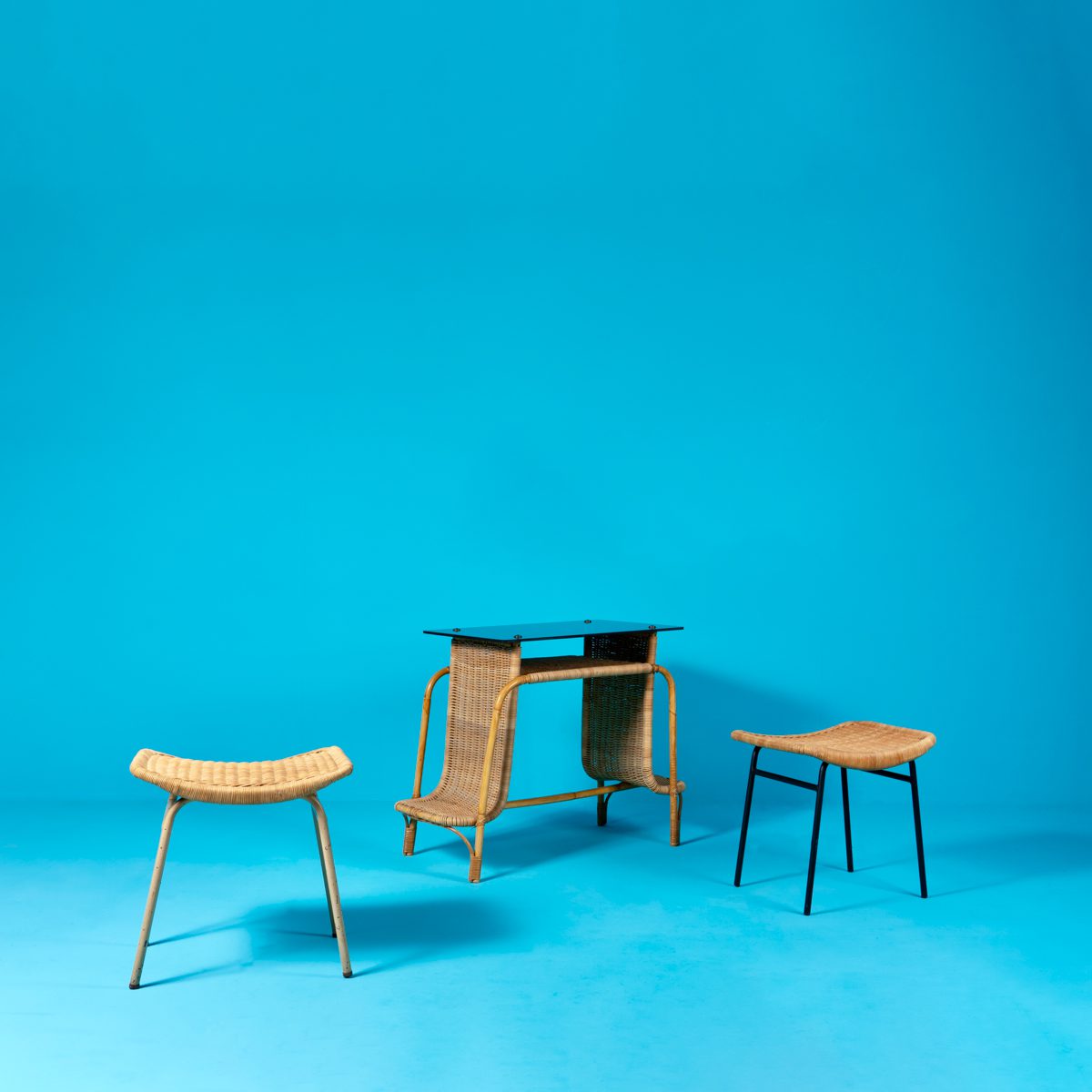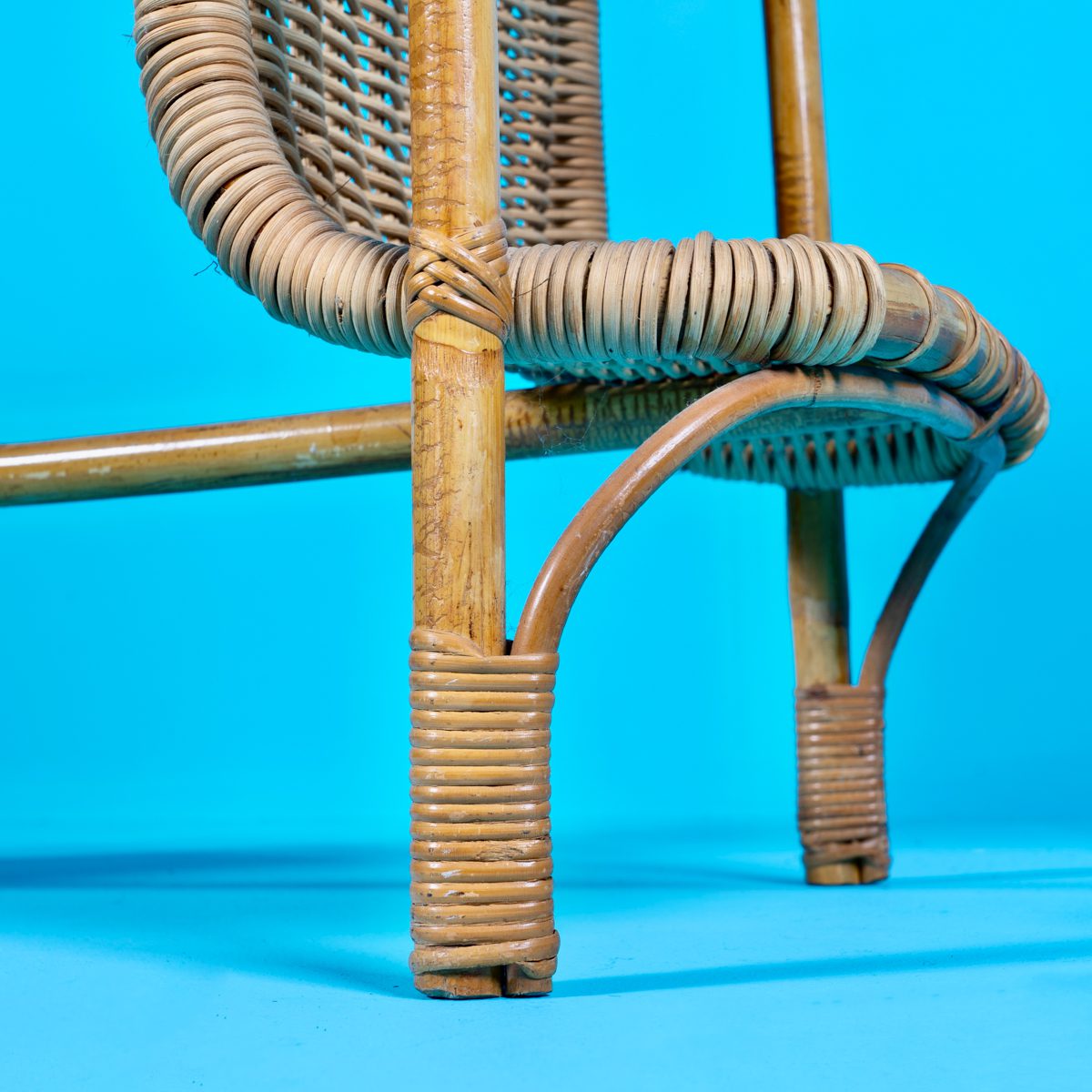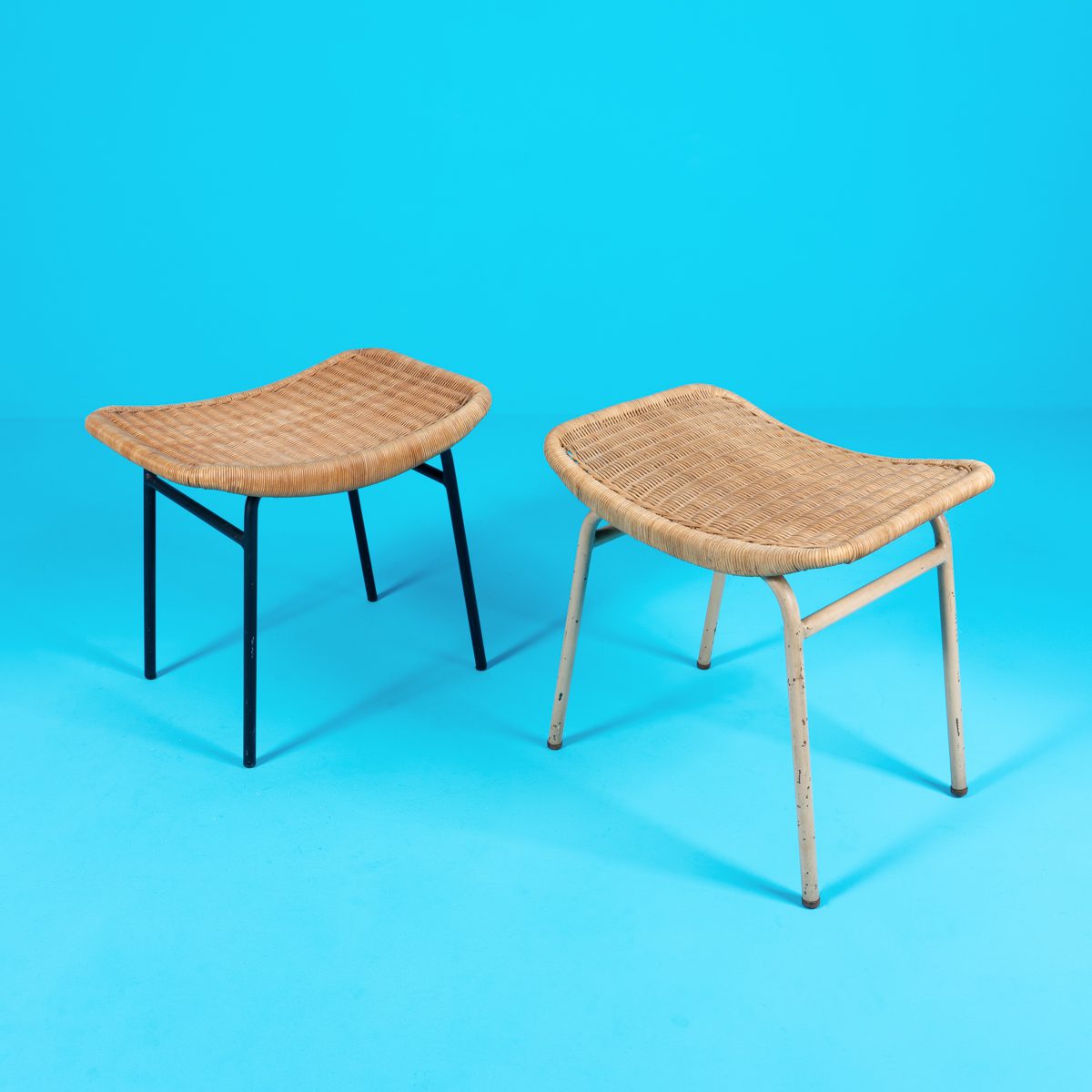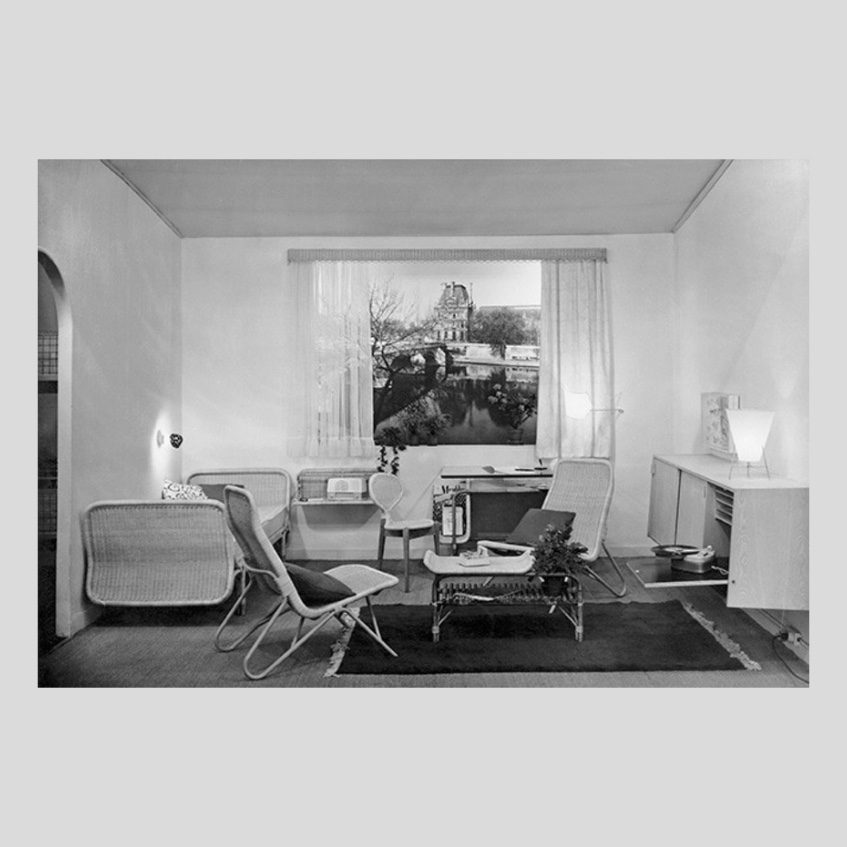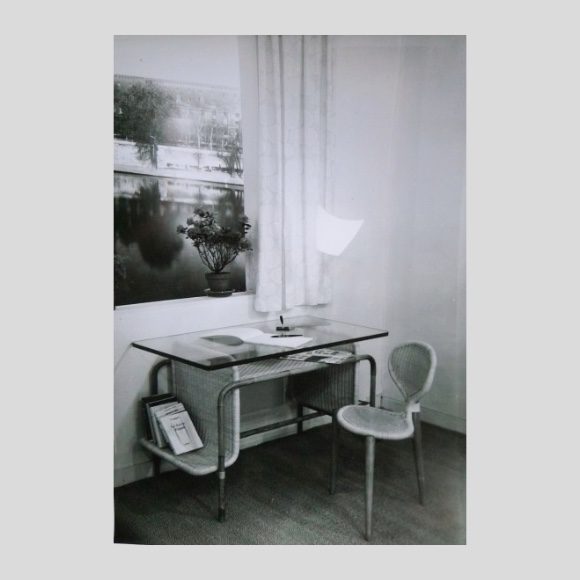JOSEPH-ANDRE MOTTE, CONSOLE AND STOOLS, ROUGIER ED., C.1954
Joseph-André Motte (1925-2013)
Desk/console and his pair of stools
Rougier – SIR edition (Rattan industrial company), France, circa 1954
Rattan, black opaline and brass and rattan, white lacquered metal and black lacquered metal
Length. 97 x Height. 74 x Depth. 56 cm
Reference:
First exhibited at the Salon des arts ménagers, 1954 - Stand SIR
Literature:
Patrick Favardin, Les décorateurs des Années 50, Norma, 1999
Archives Joseph-André Motte, ND
Archives Salon des arts ménagers, 1954
Biography:
Joseph-André Motte is one of France's most important post-war modern designers. Reflecting the idea that modern design can resolutely improve society, Motte remains a feature of everyday French life through his large-scale designs for public spaces across the country. His works cascade into places as regal as the Louvre and as everyday as the Paris metro, testing materials and heralding the importance of affordable design in a changing world.
Born in Saint-Bonnet, a village in the Hautes-Alpes region of France, Joseph-André Motte studied applied arts in Paris with René Gabriel, Louis Sognot and Albert Guénot. In 1954, Motte founded his own design agency, l'Atelier de Recherche Plastique (ARP), with renowned designers Pierre Guariche and Michel Mortier, whom he had met while studying at Marcel Gascoin's studio.
A leading figure of the French modern movement, Motte was often commissioned by the French administration to participate in major public projects, including the interior design of hundreds of Paris metro stations, his chairs remaining functional symbols of Parisian life in all metro stations. Motte also designed the airports at Orly (1954), Roissy (1970) and Lyon (1975).
In particular, his work with architect Henri Vicariot on Orly airport represents the marriage of structural and interior elements in living spaces. This kind of collaboration between architects and interior designers has rejuvenated the role of designers like Motte.
Motte experiments extensively with wood, stainless steel, Formica and plastics. The variety of these materials reflects his desire to humanize the spaces in which he works, especially as the use of concrete and other typically cold substances becomes fashionable in architecture. He once explained that "it's the material that commands, then the imagination". Motte's choice of otherwise neglected materials also contributed to cost-effective production. His desire for economy went hand in hand with his belief that large-scale production offered consumers a means of personalizing their living environment.
Motte's work represents the intersection of beauty and functionality in the face of industrial society. Motte's work is included in the collections of the Musée des Arts Décoratifs, Paris, the Musée du Louvre, Paris, and a number of public forums, including the Hôtel de Ville, Grenoble, France, 1968 and the Conseil de l'Europe building, Strasbourg, France, 1973. Motte received the Prix René Gabriel in 1957, the Grand Prix of the Brussels International Exhibition in 1958 and was named Commandeur des Arts et des Lettres, the highest distinction awarded by the French Ministry of Culture.
Text Demisch Danant Gallery

